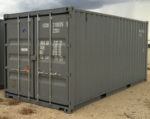
Alex Mills
By Alex Mills
Volatility in crude oil prices will continue reaching a projected high of $252 per barrel for Brent crude oil in 2040, according to a long-term forecast released by the U.S. Energy Information Administration (EIA) on April 14.
EIA is required by law to make these long-term projections. In the case of crude oil, they made six different projections based on a set of different circumstances. The $252 estimate is based on the “High Oil Price” scenario, and the “Low Oil Price” is $76 per barrel.
Natural gas is not expected to be as volatile. In all cases, prices are lower in 2015 than the $3.73 per million British thermal units (Btu) average Henry Hub spot price in 2013, and in most cases they are above that level by 2020. The Henry Hub spot price is $4.88/million Btu (2013 dollars) in 2020 and $7.85 per million Btu in 2040, as increased demand in domestic and international markets requires an increased number of well completions to achieve higher levels of production. In addition, lower cost resources generally are expected to be produced earlier, with more expensive production occurring later in the projection period, according to EIA.
The entire Annual Energy Outlook 2015 can be found at www.eia.gov.
The growth in U.S. crude oil production, along with the drop in global crude oil prices, has altered the economics of the oil market. These new market conditions are assumed to continue with the average Brent price increasing to $76 per barrel in 2018, and growth in demand pushes the Brent price to $141 per barrel in 2040 (in 2013 dollars). The increase in oil prices supports growth in domestic crude oil production.
The “High Oil Price” case assumes higher world demand for petroleum products, less upstream investment by the Organization of the Petroleum Exporting Countries (OPEC), and higher non-OPEC exploration and development costs. These factors all contribute to a rise in the average spot market price for Brent crude oil to $252 per barrel in 2040, 78% above the Reference case.
“The reverse is true in the ‘Low Oil Price’ case: lower demand, higher OPEC upstream investment, and lower non-OPEC exploration and development costs cause the Brent spot price to increase slowly to $76 per barrel, or 47 percent below the price in the Reference case, in 2040.
The EIA report also predicts continued increases in U.S. crude oil and natural gas production and continued declines in oil and gas imports.
The news was especially good news for the U.S. economy and consumers.
“Growth in U.S. energy production—led by crude oil and natural gas—and only modest growth in demand reduces U.S. reliance on imported energy supplies,” the report stated. “Natural gas is the dominant U.S. energy export, while liquid fuels continue to be imported.”
EIA noted that through 2020, strong growth in domestic crude oil production from tight formations leads to a decline in net petroleum imports and growth in net petroleum product exports in all cases.
“The United States transitions from being a modest net importer of natural gas to a net exporter by 2017,” according to the report. “U.S. export growth continues after 2017, with net exports in 2040 ranging from 3.0 trillion cubic feet (Tcf) in the Low Oil Price case to 13.1 Tcf in the High Oil and Gas Resource case.”
U.S. energy consumption grows at a modest rate over the projection period, averaging 0.3% per year from 2013 through 2040 in the reference case. EIA predicts a marginal decrease in transportation sector energy consumption will contrast with growth in most other sectors. Declines in energy consumption tend to result from the adoption of more energy-efficient technologies and existing policies that promote increased energy efficiency, according to EIA.
Growth in production of dry natural gas and natural gas plant liquids (NGPL) contributes to the expansion of several manufacturing industries (such as bulk chemicals and primary metals) and the increased use of NGPL feedstocks in place of petroleum-based naphtha feedstocks.
“Rising long-term natural gas prices, the high capital costs of new coal and nuclear generation capacity, state-level policies, and cost reductions for renewable generation in a market characterized by relatively slow electricity demand growth favor increased use of renewables.” EIA stated.
Rising costs for electric power generation, transmission, and distribution, coupled with relatively slow growth of electricity demand, produce an 18 percent increase in the average retail price of electricity over the period from 2013 to 2040. The EIA projections do not include the proposed Clean Power Plan announced by the Environmental Protection Agency but under attack from Congress and being challenged in court by 15 states.
EIA predicts that carbon dioxide emission will remain below 2005 levels through 2040 primarily because of improved efficiency in the end-use sectors and a shift away from more carbon-intensive fuels.
Alex Mills is President of the Texas Alliance of Energy Producers. The opinions expressed are solely of the author.


















It’s hard to guess what anything will cost twenty five years from now but I would think these prices are a bit low. Although coffee is still sixty cents at Dairy Queen (a bargain), the new work truck I bought was fifty thousand dollars, (was thirty thousand dollars about five years back). Insurance continues to go up every year and most of the other things we have to buy are going up too. I think our government spending more money than were worth has a lot to do with this, I guess we will see where it ends someday.